From the late 1960s through the late 1980s, Subaru was known in North America for small cars. Affordable and sometimes quirky cars, often equipped with very useful four-wheel-drive, but always small. That all changed in 1989, when the midsize Legacy first appeared here as a 1990 model. It became the best-selling U.S.-market Subaru model right away, and one of its evolutionary offshoots became the phenomenally successful Outback wagon. The junkyard is a fine place to study this sort of automotive history, and so here’s one of the first examples of the Subaru Legacy sold in the United States.
Most of the interesting discarded Subarus I find show up in Colorado boneyards, since Coloradans have loved the Pleiades-badged cars of Fuji Heavy Industries since the first four-wheel-drive Leones showed up, but this one is in Northern California.
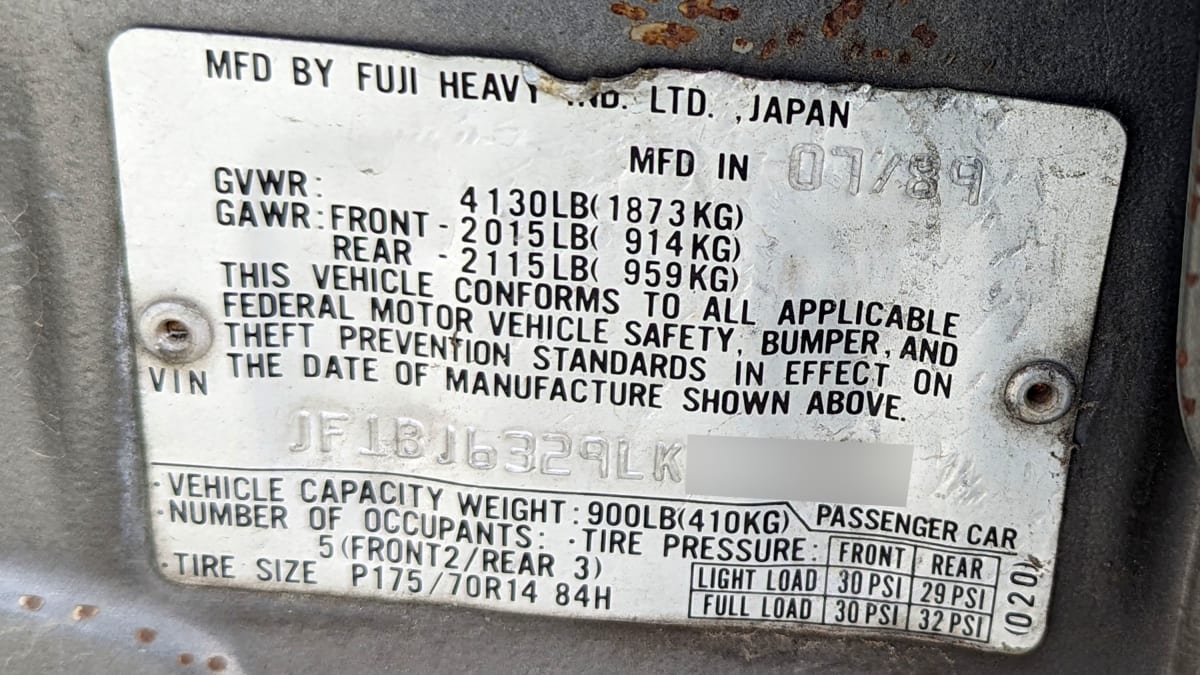
The build tag shows that this car was built at the Yajima plant a couple of months before the first Legacy rolled off the Subaru-Isuzu Automotive (now wholly owned by Subaru) assembly line in Indiana.
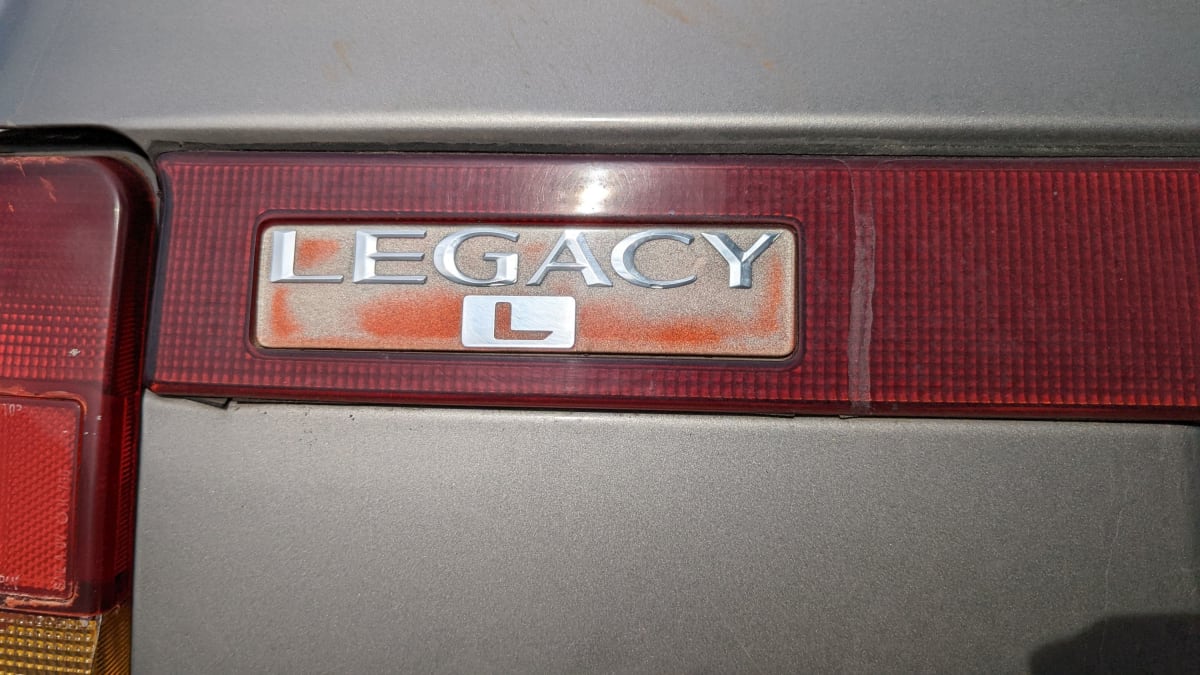
There were just two trim levels for the original U.S.-market Legacy: the base L and the upscale LS. This car is a front-wheel-drive L wagon, which had an MSRP of $13,049 (about $30,400 in 2023 dollars). That compared favorably to the cheapest Toyota Camry FWD wagon ($13,768, or $32,074 now); Honda didn’t introduce the longroof Accord here until the 1991 model year. Meanwhile, Detroit still offered ample selection for station wagon shoppers, including the more spacious Ford Taurus GL wagon for $14,722 ($34,297 today).
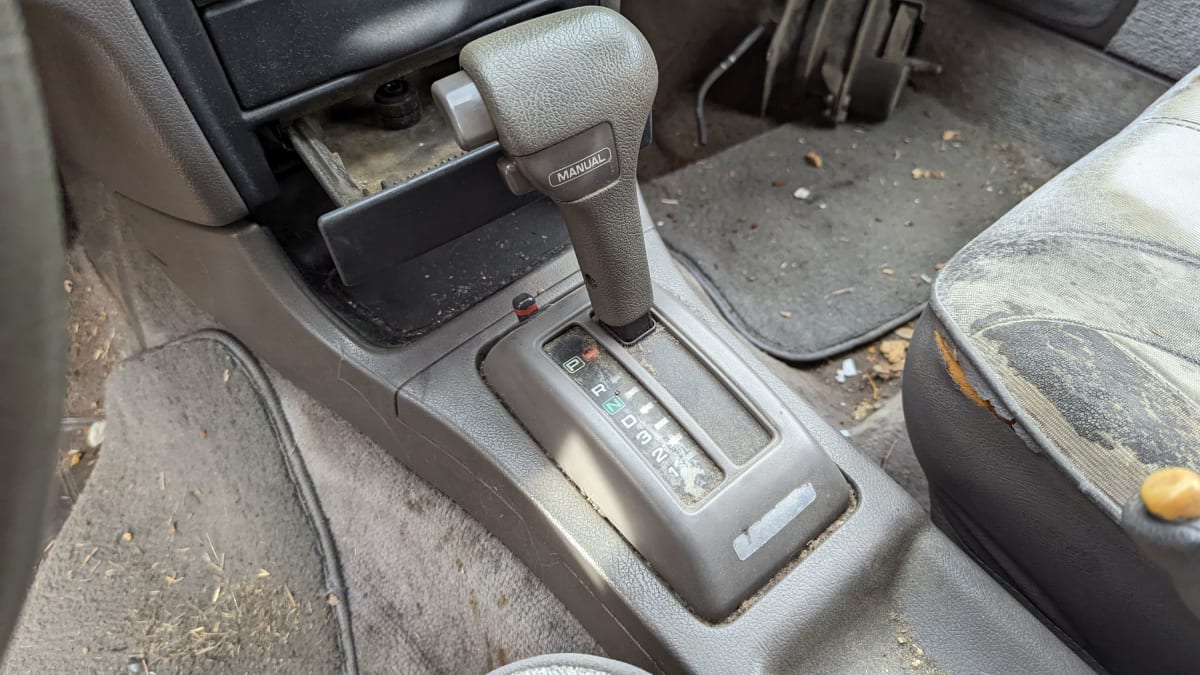
Subaru was well-known here for four-wheel-drive and all-wheel-drive cars by 1990, but the full American-market product line didn’t go fully AWD until the 1996 model year. This car is an ordinary front-driver, though it does have the optional automatic transmission instead of the base five-speed manual. If you wanted a Legacy L wagon with all-wheel-drive (still called “full-time four-wheel-drive” by Subaru at that point, because new Loyales were still available with driver-selected four-wheel-drive at the time), the price was $14,249 ($33,195 after inflation).
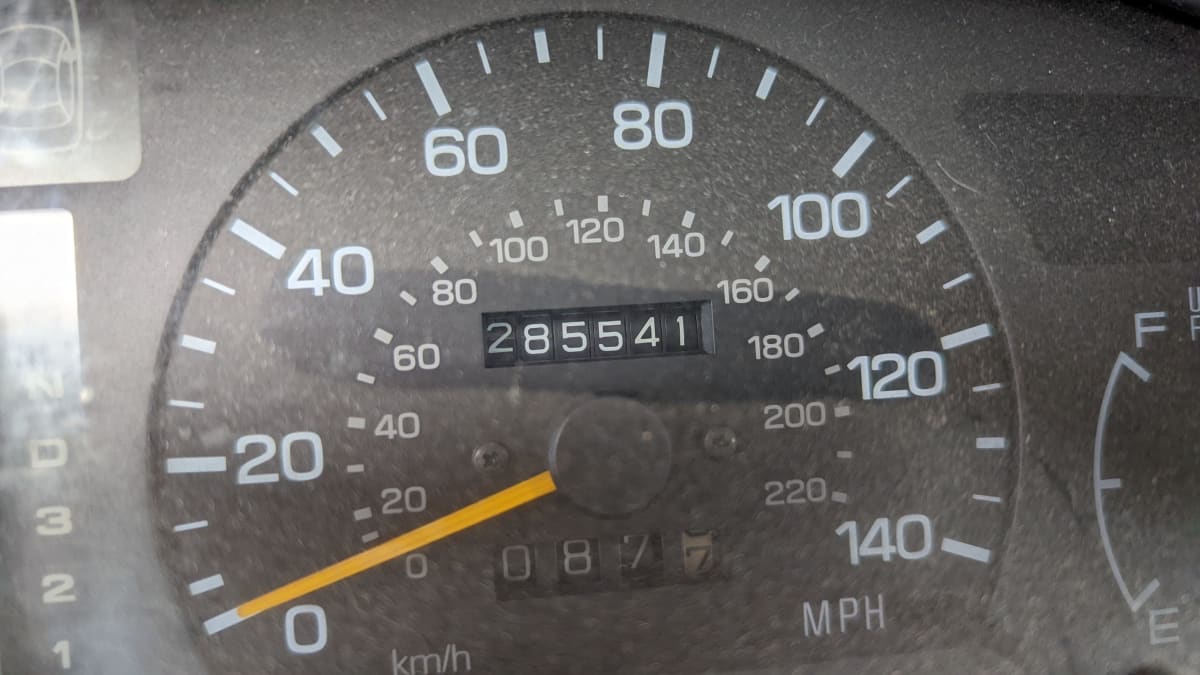
This car served its owner or owners well, traversing close to 300,000 miles during its near-quarter-century on the road.
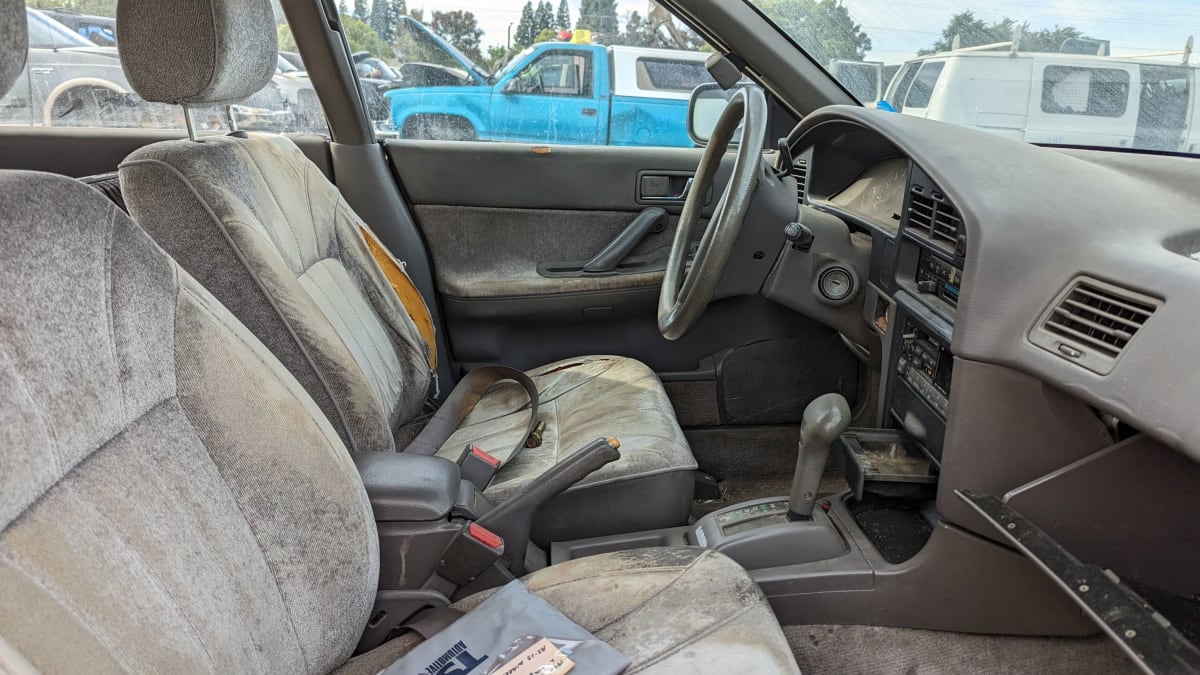
As is typical for a junkyard car with very high miles, the body and interior show normal wear but were never abused.
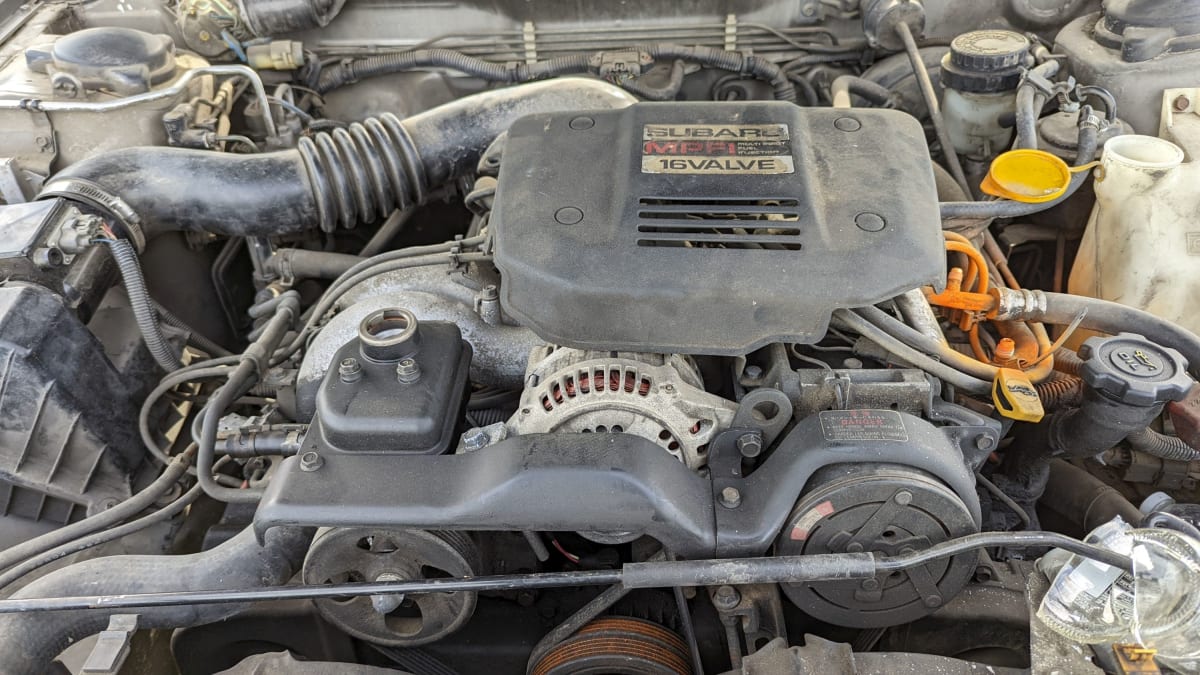
This is the optional 2.2-liter 16-valve engine, rated at 160 horsepower. The base 8-valve engine made 130 horses. I think this particular engine may be a swap from a Legacy GT, rather than factory-installed.
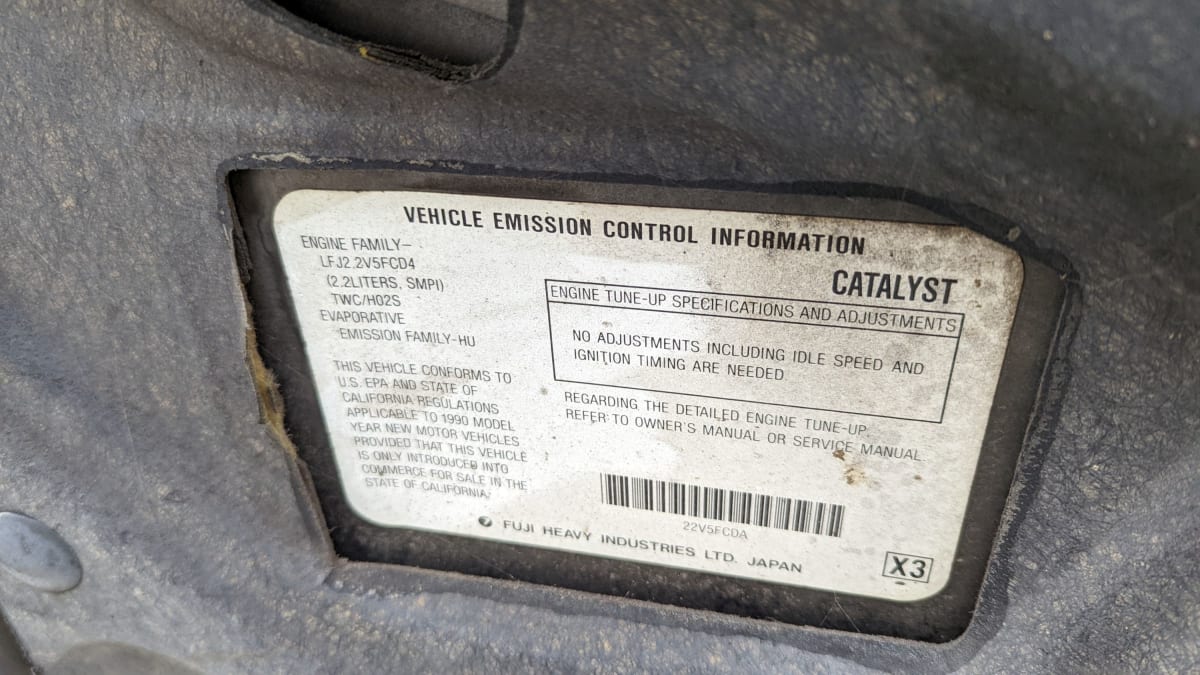
The emissions sticker shows that it’s a California-only vehicle, not a “49-state” federal version. The lack of body rust suggests that it spent most or all of its life in the Golden State.
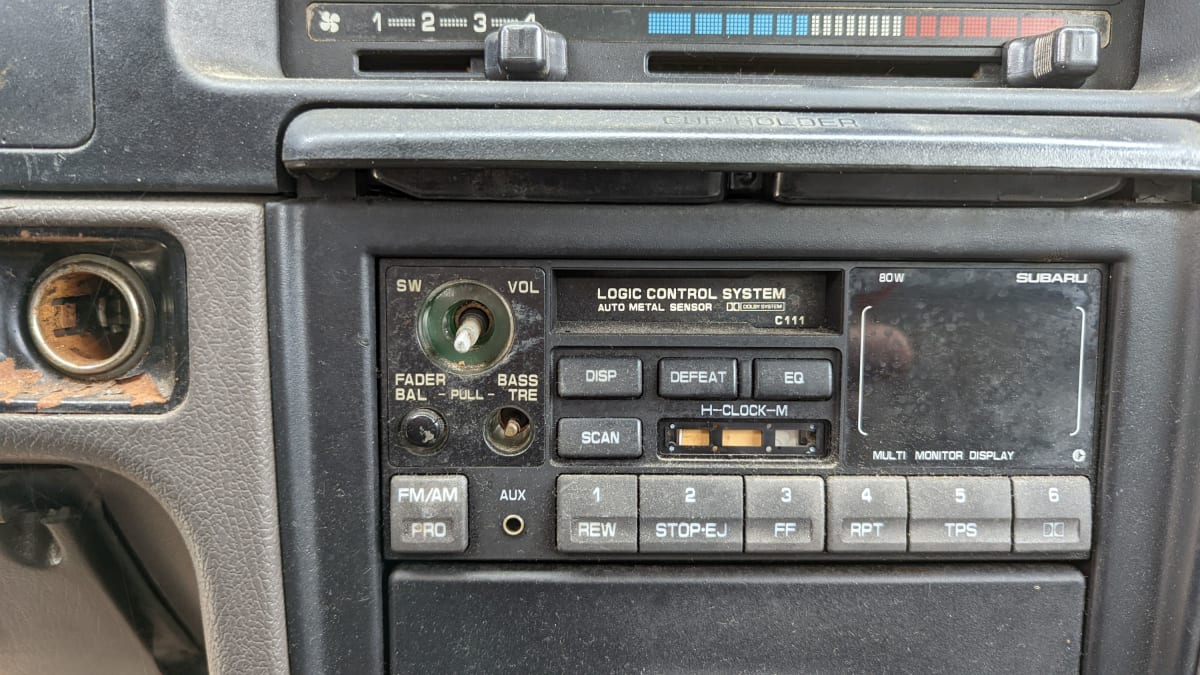
Along with the powerful engine and automatic transmission, the original buyer got this high-end Clarion cassette deck with AUX jack (a real rarity in the pre-iPod 1990s, but popular in Japan for use with MiniDisc players).
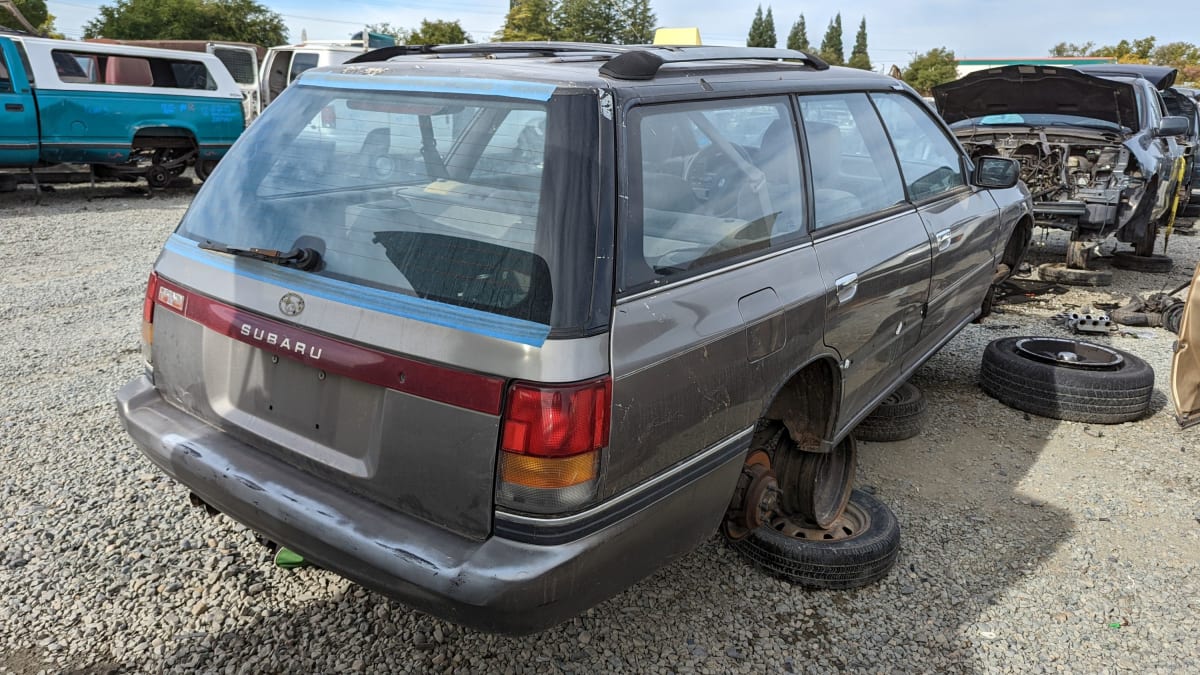
Starting in the 1995 model year, Subaru began offering the Outback outdoorsy option package on the Legacy and Impreza (including sedans). Of all the Outbacks, the Legacy Outback wagon proved by far the biggest seller, and so it became a model in its own right in the 2005 model year (though obvious Legacy badging faded away from the exteriors of Legacy Outback wagons long before that). That makes this wagon the direct ancestor of the vehicle that became the signature car of Colorado (yes, as a Denver resident I am required to own one, to go with my Subaru kei van).
Since the other guy is capable of just about anything, shouldn’t the same be true of your next car?
Show those mansplainers who knows the score by getting all the great Legacy standard features.
In Japan, the Legacy sedan got more TV commercial time.
